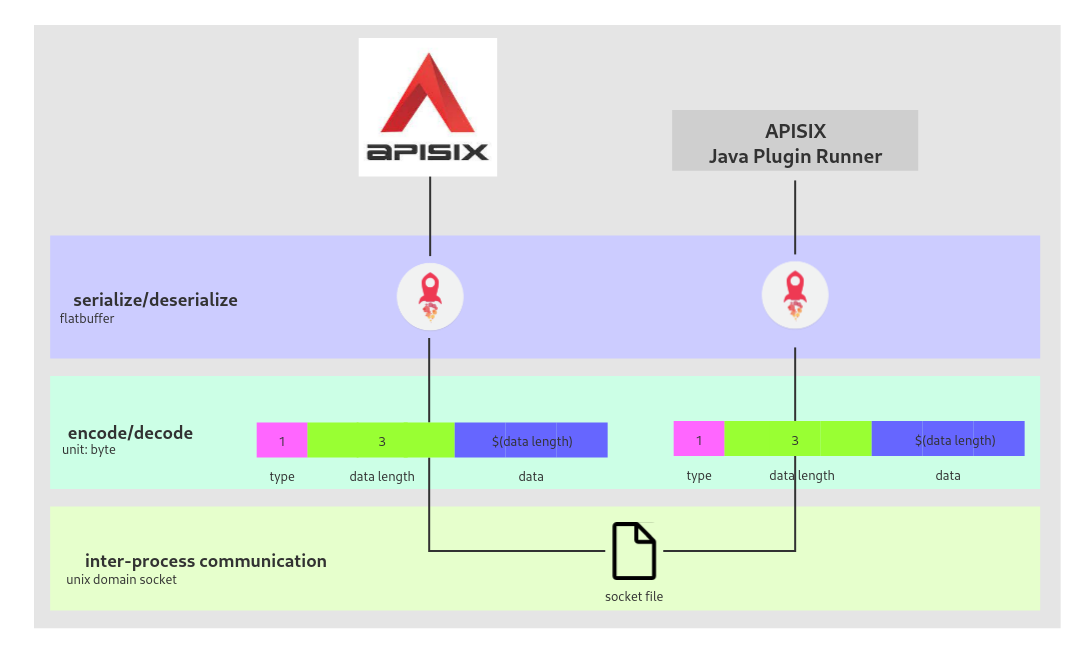The internal of apisix java plugin runner
This article explains the internal design of apisix-java-plugin-runner.
Table of Contents#
Overview#
The apisix-java-plugin-runner designed as a TCP server built using reactor-netty,
it provides a PluginFilter interface for users to implement.
Users only need to focus on their business logic, not on the details of how the apisix java plugin runner communicates with APISIX.
The inter-process communication between them is depicted by the following diagram.

Communication#
apisix-java-plugin-runner and APISIX use the Unix Domain Socket for inter-process communication, so they need to be deployed in the same instance.
apisix-java-plugin-runner is managed by APISIX. APISIX starts the apisix-java-plugin-runner when it starts and ends it when it ends. if the apisix-java-plugin-runner quits in the middle, APISIX will restart it automatically.
Serialization#
Refer to flatbuffers
FlatBuffers is a cross platform serialization library architected for maximum memory efficiency. It allows you to directly access serialized data without parsing/unpacking it first, while still having great forward/backward compatibility.
You can refer to the ext-plugin.fbs schema file to see how Lua and Java layout the serialized objects.
Codec#
apisix-java-plugin-runner and APISIX use a private binary protocol for coding and decoding. The protocol format is
1 byte of type + 3 bytes of length + dataThe type can be 0 ~ 7, and the length can be [0, 8M). The length of data is determined by length.
The current type takes the following values
- 0 means error
- 1 means prepare_conf
- 2 means http_req_call
The binary data generated by the flatbuffer serialization is placed in the data segment.